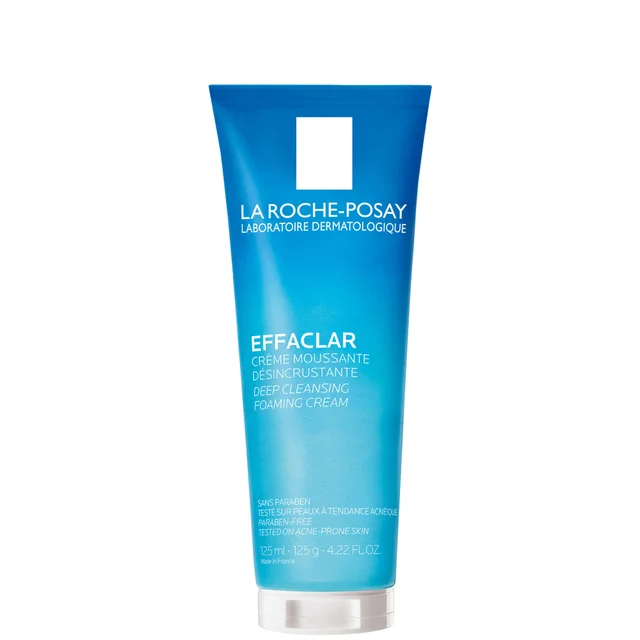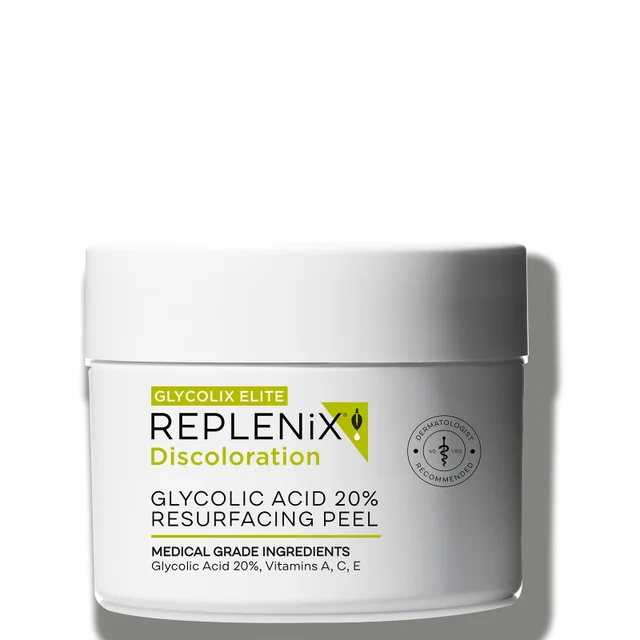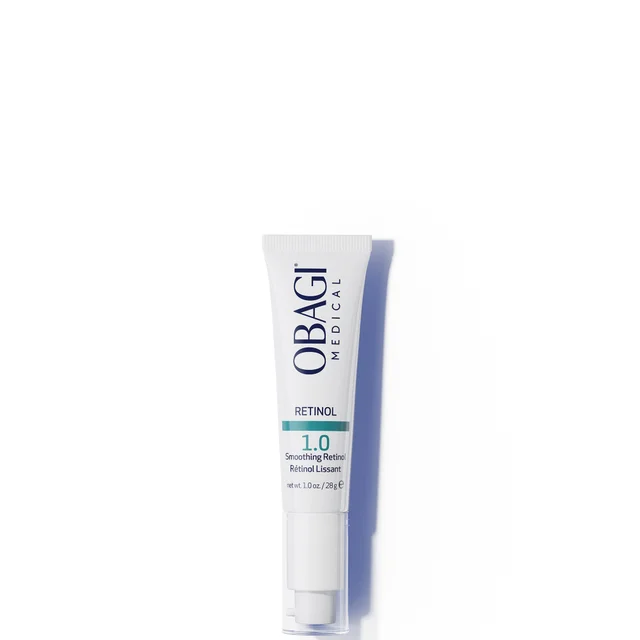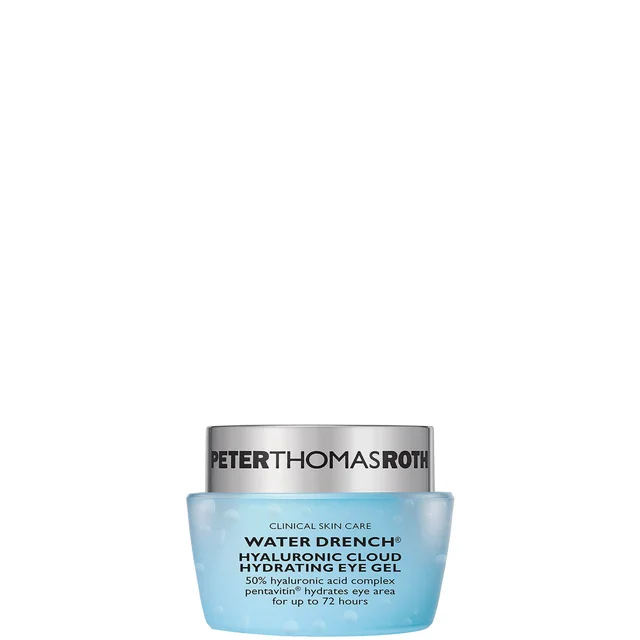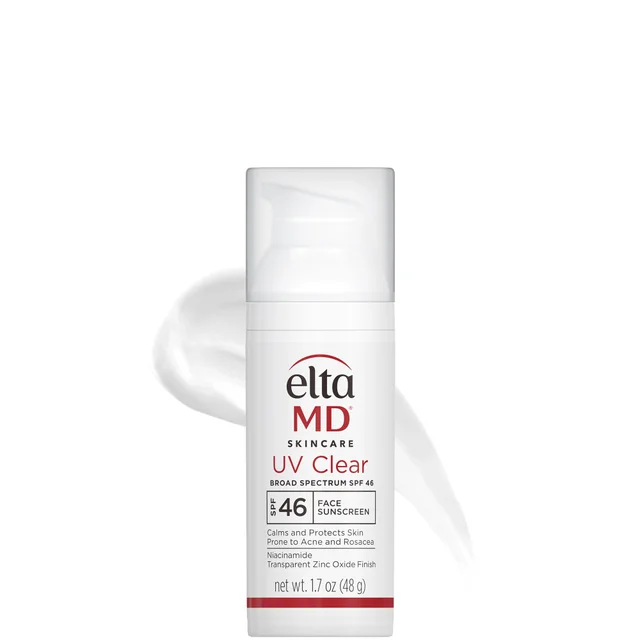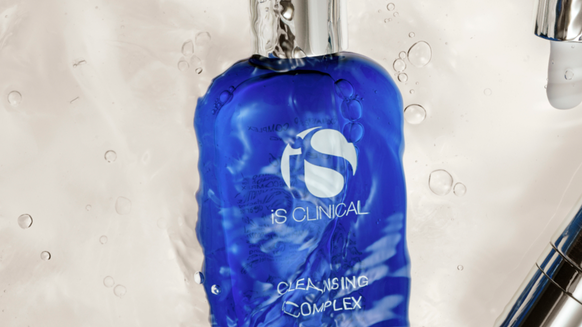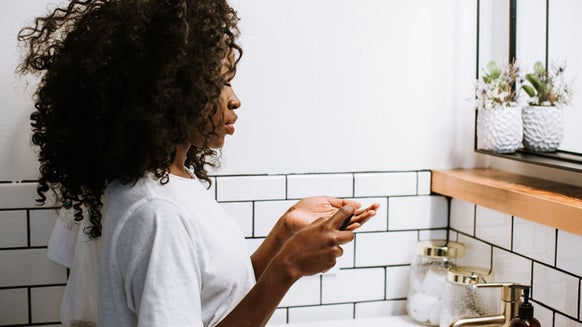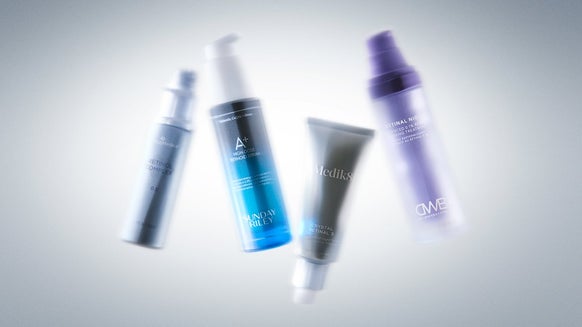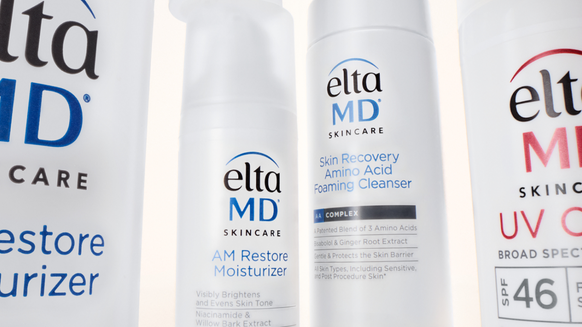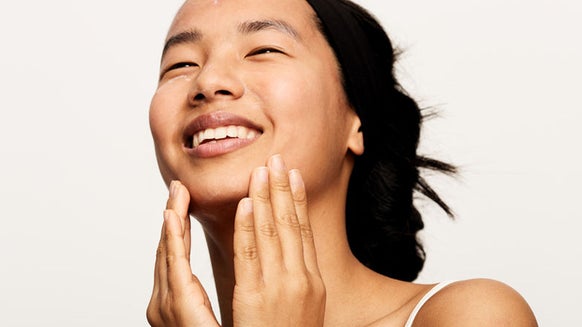How to Get Rid of Milia: 6 Skin Care Products
Although milia aren’t considered a skincare emergency, they’re enough to ruin your and your skin’s otherwise perfect day. After all, pesky white little bumps that seem to pop up out of nowhere don’t make for clear and smooth skin. Not to mention, it can be tricky to track down exactly what causes them, especially in newborns. The good news? Unlike acne, milia only affect your skin’s appearance—they don’t lead to any long-term or serious skin damage. Over time, milia can also go away on their own. But if you’d rather not wait for the bumps to eventually fade, there are a number of tried-and-tested steps you can take to restore your blemish-free skin. Keep reading to find out how to get rid of milia safely and effectively.
Our Top Skin Care Products for Milia
Best Cleanser: La Roche-Posay Effaclar Deep Cleansing Foaming Cream Best Exfoliator: Kate Somerville Liquid Exfolikate Triple Acid Resurfacing Treatment Best Chemical Peel: Replenix Glycolic Acid 20% Resurfacing Peel BestRetinoid: Obagi Medical Retinol 1.0 Best Eye Cream: Peter Thomas Roth Water Drench Hyaluronic Acid Cloud Hydrating Eye Gel Best Sunscreen: EltaMD UV Clear Broad-Spectrum SPF 46
What is Milia?
Often confused for whiteheads and even breakouts, milia are tiny keratin cysts that occur when old skin cells aren’t shed off, causing new skin to grow over them and trap them beneath the skin’s surface. They appear as tiny and smooth white bumps that are typically found on the forehead, cheeks, nose, and eye area. Milia can be white to yellow in color and are often in groups or clusters. Some milia can also be itchy or appear as a raised patch of skin.
What Causes Milia?
The jury’s still out as to what causes newborn milia, but there are a number of factors that can lead to the condition in individuals of any age. Primary milia are caused by old skin cells trapped under the skin’s surface, while secondary milia can be triggered by injury or damage to the skin due to the following:
- Sun damage
- Rashes, burns, or blisters
- Chemical treatments
- Long-term exposure to ointments or steroid creams
- Genetic condition
- Autoimmune response
Likewise, milia around the eyes and forehead are often a result of heavy eye creams as these tend to have a thicker texture, which can clog the skin when not applied the right way. The same is true for other skincare products that have comedogenic formulas and ingredients.
How to Get Rid of Milia
1. Don’t Pick or Pop Them
No matter how tempting it is or how easy it may seem to do, messing with those bumps is never a good idea and can do your skin a lot more harm than good. It can lead to bleeding, scarring, and discoloration and can expose your skin to bacteria and infection.
2. Use the Right Cleanser
A well-rounded skincare routine is the secret to preventing and dealing with the most common skin concerns, and that means starting with a gentle cleanser that’s free of pore-clogging and harsh ingredients. Cleansing should be done twice a day to make sure you’re getting rid of excess oil, debris, and old skin cells. Look for cleansers with gentle exfoliating acids like AHAs and BHAs that can help clear and renew your skin’s surface without drying out your complexion.
Featured Product: La Roche-Posay Effaclar Deep Cleansing Foaming Cream
Constantly dealing with excess oil can lead to enlarged pores and blockages, which is why having this rich cleanser in your skincare routine is a must. Gentle and hydrating, it rids your skin of pore-clogging debris while helping to tighten and refine pores, preventing breakouts and other skin woes like blackheads and milia.
Key Ingredients: Salicylic Acid, Glycerin
Skin Type: Oily, Acne-Prone, Combination, Sensitive
Beauty Insider Tip: Use warm water to lather the cream between your palms before applying to wet skin.
3. Exfoliate Gently and Regularly
Clogged pores are always bad news for your skin, especially if you’re trying to keep your complexion milia-free. Gentle chemical exfoliation can help shed old skin cells and prevent keratin from being trapped under your skin. It also encourages cell regeneration and hastens the renewal processl.
Exfoliation can be done once or twice a week, depending on how sensitive or tolerant your skin is. Opt for gentle acids like salicylic acid and glycolic acid to slough away old cells without irritating your skin or stripping it of its natural oils.
Featured Product: Kate Somerville Liquid Exfolikate Triple Acid Resurfacing Treatment
Featuring a triple acid blend, fruit enzymes, and peptides, this supercharged exfoliating treatment is your best bet when it comes to smoothing texture, brightening your complexion, refining pores, and dissolving skin cell buildup.
Key Ingredients: 10% Triple Acid Blend (Glycolic, Malic, and Lactic Acids)
Skin Type: All Skin Types
Beauty Insider Tip: A true multitasker, this exfoliating treatment also works as a toner that won’t strip your skin and can be applied to the top of your hands to help keep signs of aging at bay.
4. Consider a Chemical Peel
Sometimes, your skin needs more than just regular exfoliation to kickstart its renewal process—and that’s where chemical peels come in. A facial peel, whether done at home or by a professional, can hit multiple birds with one stone and address several skin concerns at the same time, including uneven texture, discoloration, and milia. That said, it’s best to play it safe when choosing active ingredients, especially if you’re new to chemical peels. Stick with proven gentle acids like glycolic acid and salicylic acid as harsher treatments can worsen milia and lead to irritation.
Featured Product: Replenix Glycolic Acid 20% Resurfacing Peel
You can’t go wrong with this easy-to-use peel that resurfaces your complexion with its skin-renewing blend of exfoliating and brightening ingredients. These pads minimize the look of fine lines and wrinkles while refining and unclogging large pores to banish blemish-causing debris and old skin cells.
Key Ingredients: Glycolic Acid, Antioxidants, CoenzymeQ10
Skin Type: All Skin Types
Beauty Insider Tip: Each pad of this resurfacing peel is also infused with witch hazel that delivers skin-toning and astringent benefits.
5. Try a Retinoid
Retinoids are prime examples of a do-it-all skincare ingredient. Aside from being an anti-aging rockstar, it can also help get rid of milia. They speed up cell regeneration and promote the natural shedding of skin cells, preventing them from clogging pores and leading to conditions like milia. Do note, however, that if you’re planning to add peels, exfoliants, and retinol to your milia routine, it’s best to use them alternately to avoid irritation that could potentially make matters worse. If you want to play it safe, speak with your dermatologist to get guidance on how to incorporate these active ingredients in your regimen.
Featured Product: Obagi Medical Retinol 1.0
This retinol treatment doesn’t only allow your skin to turn back time, it’s also great at diminishing hyperpigmentation and uneven texture. It hastens cell turnover to prevent premature skin aging and improve firmness and elasticity while also preventing free radical damage and breathing new life to skin that’s dealing with acne, discoloration, and milia. Plus, it’s also infused with hyaluronic acid, shea butter, and jojoba oil to soothe and hydrate skin.
Key Ingredients: 1% Retinol, Hyaluronic Acid, Vitamin C, Vitamin E
Skin Type: All Skin Types
Beauty Insider Tip: New to retinol and worried about sensitivity and irritation? You can start low and slow with the 0.5 variant instead.
6. Switch Out Your Eye Cream
Milia around the eyes are often caused by heavy eye creams that tend to clog and overwhelm pores. These bumps are a bit trickier to address as the skin in the eye area is thinner and more sensitive than the rest of the face. But that doesn’t mean you’ll have to put up with puffiness, dark circles, and crow’s feet just to avoid those annoying little bumps. Switch to a lighter, non-comedogenic eye cream to get that refreshed, wide-awake, and youthful look without worrying about clogging your pores.
Featured Product: Peter Thomas Roth Water Drench Hyaluronic Acid Cloud Hydrating Eye Gel
This eye cream comes heavy with hydration while staying light and easy in texture and application. It delivers intense moisture to your area, plumps up the skin, and improves fine lines, wrinkles, dark circles, and puffiness without overwhelming your skin and pores.
Key Ingredients: 50% Hyaluronic Acid Complex, Pentavitin®, 3% AcquaCell
Skin Type: All Skin Types
Beauty Insider Tip: This hydration powerhouse can lock in moisture for up to 72 hours, even after cleansing.
7. Never Skip Sunscreen
We can’t stress enough the importance of wearing SPF every day. Not only does UV damage cause premature skin aging, it’s also one of the culprits behind enlarged pores. When choosing a sunscreen, opt for a noncomedogenic, broad spectrum, and water-resistant formula with at least an SPF 30 for everyday wear.
Featured Product: EltaMD UV Clear Broad-Spectrum SPF 46
There’s a reason this best-selling sunscreen is the ultimate holy grail SPF. More than just a broad-spectrum and water-resistant UV shield, this all-rounder is a skincare hero that goes hard at reversing sun damage, unclogging and refining pores, and hydrating and nourishing the skin.
Key Ingredients: Zinc Oxide, Hyaluronic Acid, Niacinamide, Lactic Acid, Antioxidants
Skin Type: Acne-Prone, Sensitive
Beauty Insider Tip: Packed with ingredients that soothe sensitivity and inflammation, this sunscreen also helps calm skin conditions like rosacea, acne, and eczema.
FAQs
How Long Do Milia Last?
Newborn milia or milk spots typically resolve on their own within a few weeks after they appear. In adults, milia could take a few weeks to a couple of months before they fade away.
Can Milia Be Extracted at Home?
Milia removal is a lot more complicated than simply popping a pimple and shouldn’t be attempted at home—especially when they’re on your extra-delicate eye area. It requires an extraction tool and an incision that could lead to bleeding, scarring, and infection when not performed by a professional in a safe and sterile environment.
The Bottom Line
Not to be confused with whiteheads or pimples, milia are tiny cysts made up of keratin that form when dead skin cells build up and are trapped beneath the skin’s surface. These white to yellow bumps often appear in clusters on the forehead, cheeks, nose, and eye area. Although milia are just a cosmetic concern and don’t lead to any serious skin damage, you can hasten their disappearance with a few tweaks in your skincare regimen. When looking for ways on how to get rid of milia, start by cleansing twice daily, gentle exfoliation, trying a facial peel, adding a retinol, and switching to a lighter eye cream. Take note, however, that it’s best not to take matters into your own hands and leave manual milia extraction to the pros.

Janeca Racho is a Journalism graduate with over 15 years of writing experience. After getting her start in public relations and advertising, she made the switch to freelance writing and began working for various lifestyle, fashion, and travel brands. Her love for all things skincare has led her to beauty reporting and research for the last ten years. Writing for several hair and beauty blogs, she reports on anti-aging staples, trending brands and products, must-have ingredients, and health and wellness.
